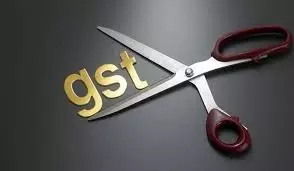By Sangeetha G
Copyright deccanchronicle

Chennai: The GST rate reduction is estimated to result in a net revenue loss of Rs 48,000 crore to the government. The 4.5 per cent reduction in tax revenue will not be a significant loss, finds Crisil.The government has estimated a net loss of an annualised Rs 48,000 crore in revenue in the short term on account of GST rationalisation. Total GST collections in the previous fiscal were Rs 10.6 lakh crore. Hence, a loss of 4.5 per cent does not seem significant.The recalibration of the tax rates are unlikely to pose a fiscal burden. In FY24, 70-75 per cent of GST revenue came from the 18 per cent slab. Only 5-6 per cent was from the 12 per cent slab and 13-15 per cent from the 28 per cent slab. Reducing tax rates of items from 12 per cent may not render a significant revenue loss.Rates are unchanged on several fast-growing services such as mobile tariff charges. New services such as e-commerce delivery were also brought under GST and are taxed at 18 per cent. Some increase in disposable incomes due to benefits on other mass consumption items could further drive up their demand and tax collections.Differentiated taxes between lower and higher-value items within a category can also help mitigate the fiscal impact. The rate was hiked for higher-value items of clothing and two-wheelers even as taxes on lower-value items were lowered. Premium demand from upper-income segments could remain intact, supporting revenue.GST simplification from four to two slabs can bring more goods and services under the formal net, which could gradually support tax buoyancy over the medium term.Further, impact on consumption depends on the speed and the extent to which the GST cuts are passed to consumer prices, tax cuts on essentials can increase purchasing power, creating a broader boost for consumption gradually.There are other macro tailwinds for consumption this fiscal, such as low inflation, easing borrowing costs, the government’s income-tax relief announced at the start of this year and healthy agriculture incomes due to a bumper rabi crop and broadly supportive southwest monsoon for the kharif crop.A rise in private consumption – the largest component of India’s GDP at 57 per cent – should help partly offset tariff headwinds this fiscal. However, the impact of the GST rate cuts can be gradual given the multiple factors at play.“We expect some pressure on tax revenue on account of lower nominal GDP growth amid low inflation. Nominal GDP was at 8.8 per cent in the first quarter of this fiscal, much below the 10.1 per cent budgeted by the Centre for this fiscal. Non-tax revenue, especially from higher dividends by the RBI has offered a partial offset so far,” Crisil said.



